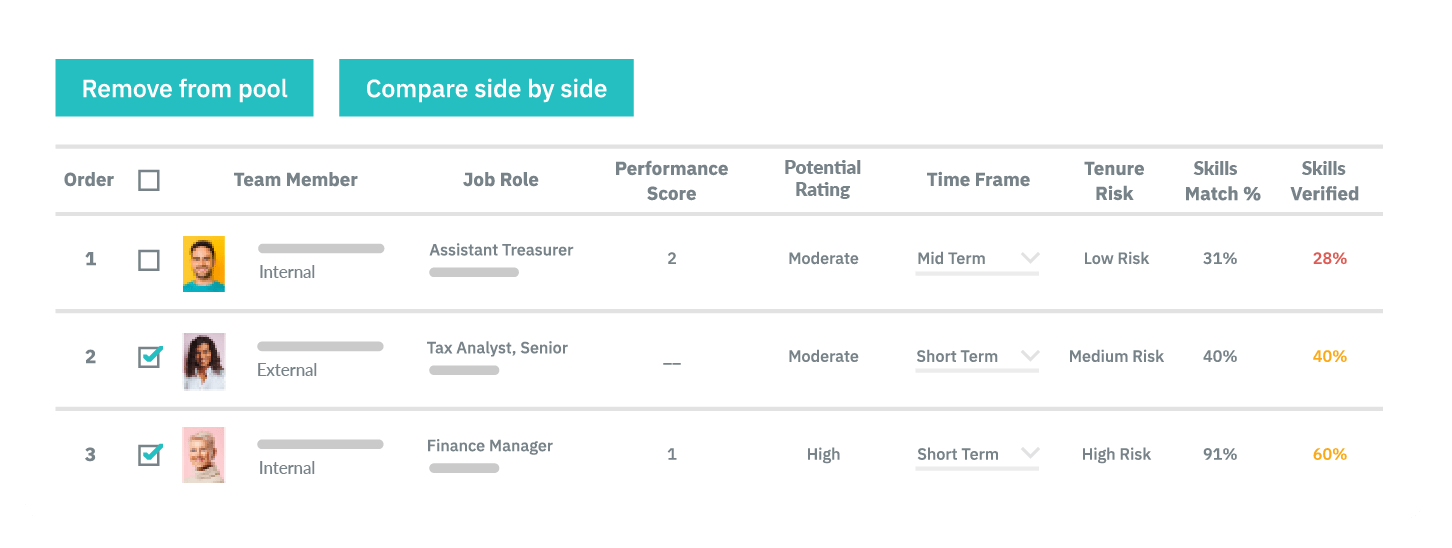Impact of Skills Alignment on Employee Motivation

The impact of skills alignment goes beyond being a buzzword for HR teams—it transforms how employees apply their unique skills and strengths to meet role expectations. When companies get this right, the experience for both the employee and the company improves. But when things are out of sync, it can slowly erode motivation and morale, leading to attrition. Let’s dive into why skill alignment matters. It’s more personal than people often realize.
Imagine working at a company you respect in a role that sounds impressive on paper. But day after day, something feels off. Each day, employees struggle to stay afloat, feeling mismatched with their strengths. Eventually, that friction drains your motivation, becoming the kind of frustration that can push someone out the door. Many of us have felt that, and the root issue often lies in something deceptively simple: skills alignment.
Motivation: The Hidden Driver in Skills Alignment
If you’ve ever had a role where you felt confident in your skills, you know how good that feels. The work has a natural rhythm and a sense of energy that builds as you tackle challenges. This is where people feel motivated to do their best because their work feels meaningful. Employees who feel their skills match their tasks and interests are more likely to take ownership, work harder, and even develop new ideas.
But here’s the flip side: misalignment. When someone’s skills don’t match their job, their motivation doesn’t just drop—it tanks. I have a friend who’s great at big-picture thinking but ended up stuck in a role full of repetitive tasks. He wanted to contribute and make an impact, but every day, he put energy into things that didn’t play to his strengths. Over time, he felt disconnected and even resentful. Eventually, he left the company altogether, not because he didn’t care, but because he didn’t feel his skills were being put to any actual use.
That’s the real kicker about motivation. It isn’t just about whether someone likes their job; it’s about whether they feel like they’re in the right seat, making a meaningful difference with their unique skills. When skills align with roles, it’s not only easier to stay motivated—it becomes natural.
Retention: Keeping People for the Right Reasons
Retention thrives when skills alignment is prioritized. Employees who feel valued are more likely to stay engaged and committed. The truth is that people leave when they feel unseen, unsupported, or like they’re not growing in a meaningful way. When a role doesn’t align with a person’s skills, it can feel like a prison sentence. There’s no growth, no excitement—just the feeling of being boxed in by expectations that don’t match what you’re good at.
Companies that actively align roles with employees’ evolving skills transform the work experience. This isn’t about keeping people from leaving; it’s about giving them reasons to stay. I think of one organization with a policy of “revisiting roles” every six months. Managers would sit down with employees and ask, “Are you feeling challenged? Are there skills you have that we’re not using? Do you want to shift focus?” The company allowed roles to adapt to the individual, not the other way around. And it worked. People stayed because they felt valued and had a say in their growth.
Skills alignment may not guarantee lifelong tenure, but it ensures employees contribute their best while they’re part of the team. But it means that while they’re with your organization, they’ll be more committed, engaged, and likely to speak positively about the company. And that kind of loyalty? It’s worth its weight in gold.
The Personal Benefits of Skills Alignment
Skills alignment isn’t just a corporate strategy; it’s personal. When employees feel their strengths are recognized, their job satisfaction skyrockets. Work becomes more than a paycheck; it becomes a source of pride and purpose. And this impacts everything from daily motivation to long-term career planning. It’s a subtle but profound shift from “I have to do this” to “I get to do this.”
I once spoke with a software engineer who loved problem-solving. The company placed her on a team where her primary role involved testing other people’s code, which was fine but didn’t light her up. When her company finally noticed her problem-solving skills, they adjusted her role to include a mentorship component where she could guide newer team members through complex coding challenges. She thrived. Her productivity, morale, and relationship with her manager improved because she felt genuinely valued and understood.
By aligning personal strengths with business goals, organizations unlock employees’ full potential. They feel like the best version of themselves, not just because they’re doing work that matters to them, but because they’re growing in the process.
Building a Culture That Embraces Skills Alignment
Skills alignment isn’t a “one-and-done” task. It must be woven into the company culture, championed by leadership, and sustained by managers and teams. This means creating a culture where skills are regularly reassessed, feedback is encouraged, and employees feel comfortable speaking up about what’s working and what isn’t.
Imagine a company where people are expected to adjust their roles as they grow. Instead of sticking strictly to job descriptions, employees are encouraged to shape their roles to match their skills and interests. They feel more connected to their work, more supported by their managers, and more motivated to make an impact.
This doesn’t mean roles should constantly shift, but companies should create an environment flexible enough to adapt to people’s evolving strengths. Employees are dynamic—they gain new skills, develop new interests, and hone different strengths over time. A rigid job structure won’t capture that. But a company culture that encourages employees to bring their whole selves to work? That’s a place people want to stay. However, implementing such a culture may face resistance from traditional structures and mindsets, which is a challenge that needs to be addressed.
Final Thoughts: A Human-Centered Strategy
Skills alignment is about recognizing that people aren’t just parts of a machine. We all have unique strengths, and when we’re in roles that reflect them, we bring out the best in ourselves. For companies, this means a more motivated workforce and resilient, adaptable, and dedicated team. It means fewer people are “quite quitting” and more people are contributing in ways that drive the business forward.
The impact of skills alignment on motivation and retention can’t be overstated. It’s a human strategy recognizing that we work best when we feel seen, valued, and supported in doing work that plays to our strengths. When companies embrace this, they’re not just aligning skills—they’re aligning people with purpose. And that? That’s the kind of alignment that makes all the difference.
To learn more about the impact of skills alignment and how TalentGuard can help your organization, request a demo.
See a preview of TalentGuard’s platform
Why Workplace Agility is Essential in Today’s Workforce
Workplace agility is essential for organizations seeking to maintain a competitive edge. Market demands are constantly shifting, technological advancements are accelerating, and unexpected business challenges are arising more frequently. Organizations must respond quickly to these changes, and a lack of agility can hinder an organization’s ability to keep up, leaving it vulnerable to competitors and […]
Dynamic Skills Mapping Enhances Talent Mobility
Dynamic skills mapping represents a powerful evolution in workforce management, reshaping how companies address employee development and organizational growth. By continuously updating each employee’s skill profile in real time, this approach replaces static career models with a fluid system that evolves with the company’s changing needs. Dynamic skills mapping fosters a culture of continuous learning […]
Best Internal Talent Marketplace Platforms
Internal Talent Marketplace Platforms The demand for skilled talent is rapidly growing. Companies today are increasingly turning to their existing workforce to find the best talent for their roles. 74% of organizations invest in internal mobility programs to drive employee engagement and retention. Internal talent marketplaces are gaining popularity due to their incredible features for […]



